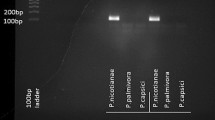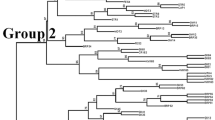Abstract
Microsatellite development has been stymied by highly repetitive DNA in the large, highly duplicated conifer genome and by so few genomic conifer sequences in public databases. Recovery of microsatellites from the low-copy component was tested as an efficient approach to marker development. Microsatellites were isolated from Pinus taeda L. via low-copy enrichment and filter-hybridization of tri- and tetra-nucleotide repeat motifs. Efficiency at three phases of marker development was compared for low-copy and total-genome control libraries. In the first phase, enrichment for microsatellites was slightly lower in the low-copy libraries. In the second phase, redundancy was higher in the low-copy libraries. In the third phase, low-copy libraries provided more polymorphic markers than total-genome libraries. Of 418 sequenced low-copy clones, 102 were unique sequences with repeat motifs. Of these unique sequences, twice as many were useful for marker development compared to the total-genome control. Difficulty in microsatellite marker development due to highly repetitive DNA can be abated by low-copy enrichment or circumvented by selecting for specific CG-rich trinucleotide repeat motifs. Sixteen new low-copy and genomic P. taeda microsatellites were given as an example.
Similar content being viewed by others
Author information
Authors and Affiliations
Additional information
Received: 19 April 2000 / Accepted: 27 February 2001
Rights and permissions
About this article
Cite this article
Elsik, C., Williams, C. Low-copy microsatellite recovery from a conifer genome. Theor Appl Genet 103, 1189–1195 (2001). https://doi.org/10.1007/s001220100725
Issue Date:
DOI: https://doi.org/10.1007/s001220100725




